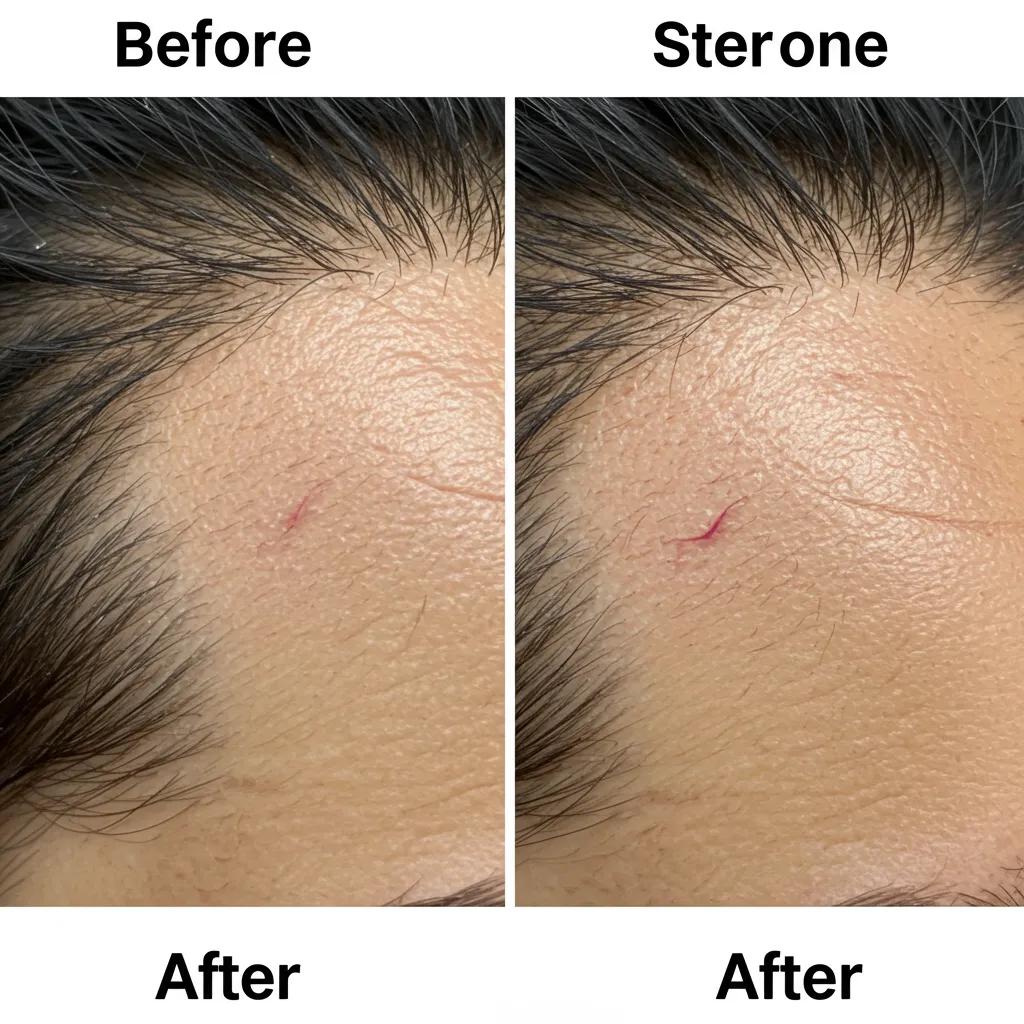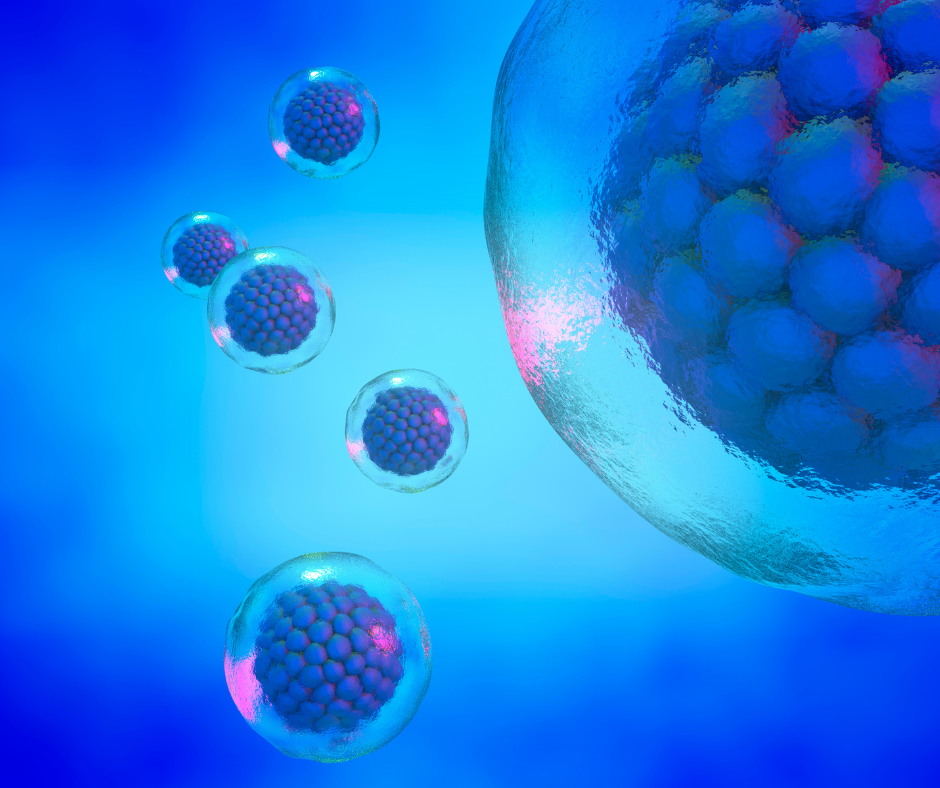Microneedling with Stem Cells and Exosomes: Benefits, Hair Growth, and Skin Rejuvenation Explained
Microneedling with stem cells and exosomes harnesses micro-injury-induced regeneration alongside potent biological messengers to accelerate collagen synthesis, follicle stimulation, and cellular renewal. As of October 2025, advanced regenerative protocols combine collagen induction therapy with extracellular vesicles derived from mesenchymal stem cells to deliver over 300 growth factors deep into the dermis and scalp. This article defines the core concepts of microneedling, exosomes, and stem cells, explains their synergistic mechanisms, details skin-rejuvenation and hair-restoration benefits, outlines the full treatment journey, examines clinical evidence on safety and efficacy, compares this approach with other regenerative options, and addresses cost and accessibility considerations. Readers will gain a clear roadmap for understanding how microchannels enable enhanced absorption, how growth factors remodel tissue, and why this integrated therapy represents a breakthrough in aesthetic medicine.
What Is Microneedling with Stem Cells and Exosomes?
Microneedling with stem cells and exosomes is a therapeutic procedure that combines collagen induction therapy with topical or injectable biological agents to promote tissue repair. By creating controlled microchannels in the skin or scalp, microneedling triggers a wound-healing cascade that upregulates collagen and elastin production. Applying exosome serums and stem cell concentrates immediately after treatment delivers signaling molecules directly into the target tissue, optimizing regenerative outcomes and reducing downtime.
How Does Microneedling Stimulate Skin and Hair Regeneration?
Microneedling stimulates skin and hair regeneration by creating thousands of micro-injuries that activate fibroblasts and dermal papilla cells.
- Microchannels initiate platelet-derived growth factor release, recruiting repair cells.
- Fibroblast proliferation increases collagen I and III synthesis, improving skin elasticity.
- Dermal papilla activation enhances follicle stimulation, promoting anagen phase reentry.
This cascade not only restores dermal structure but also primes the tissue for enhanced absorption of bioactive molecules, setting the stage for exosome-mediated regeneration.
What Are Exosomes and Their Role in Regenerative Therapy?

Exosomes are nano-sized extracellular vesicles secreted by stem cells that contain proteins, lipids, mRNA, and microRNA to orchestrate intercellular communication.
- Mechanism: Exosomes bind to target cell receptors and fuse with the plasma membrane to deliver cargo.
- Function: They promote angiogenesis, modulate inflammation, and stimulate collagen production.
- Advantage: Unlike whole-cell therapies, exosomes carry a high concentration of growth factors without eliciting immune rejection.
This vesicle-based delivery system accelerates tissue repair by providing a concentrated pool of signaling molecules exactly where microinjuries have occurred.
Exosomes for Skin Aging: Mechanisms, Delivery, and Microneedling Applications
Exosomes derived from mesenchymal stem cells (MSCs), adipose-derived stem cells (ADSCs), and other sources have shown promising results in enhancing skin cell proliferation and collagen synthesis and reducing oxidative stress, thereby mitigating both intrinsic and extrinsic skin ageing. Therefore, this review explores the mechanisms through which exosomes exert their effects, including the modulation of signalling pathways involved in cell growth, anti-inflammatory responses, and matrix remodelling. We also explore innovative delivery systems for exosome-based therapies, such as microneedling and hydrogels, which enhance the penetration and efficacy of these vesicles in skin applications.Unveiling exosomes in combating skin aging: insights into resources, mechanisms and challenges, S Aghayants, 2025
How Do Stem Cells Contribute to Microneedling Treatments?
Stem cells, particularly mesenchymal stem cells (MSCs) derived from adipose tissue or umbilical cord, enhance microneedling outcomes through their regenerative capacity and paracrine signaling.
- Source: MSCs produce exosomes rich in VEGF, FGF-2, IGF-1, and TGF-β1.
- Regenerative Role: They secrete anti-inflammatory cytokines and promote cell proliferation.
- Safety: Autologous or allogeneic MSC applications exhibit low risk of adverse reactions when processed under sterile conditions.
By supplying a reservoir of progenitor cells and extracellular vesicles, stem cell concentrates complement micro-injury cues to accelerate tissue remodeling.
How Do Exosomes and Stem Cells Work Together with Microneedling?
Microneedling’s microchannels enable enhanced absorption of stem cell–derived exosomes, creating a synergistic environment for regeneration.
- Microchannels open transient pathways through the stratum corneum.
- Exosomes penetrate these channels and fuse with dermal cells.
- MSCs at the treatment site secrete additional exosomes to sustain growth factor delivery.
This coordinated approach maximizes growth factor bioavailability, accelerates collagen induction, and amplifies follicle stimulation for superior skin tightening and hair density gains.
What Are the Key Benefits of Exosome Microneedling for Skin Rejuvenation?
Exosome-infused microneedling delivers targeted growth factors that address multiple aging concerns by enhancing collagen, modulating pigmentation, and improving texture.
How Does Exosome Therapy Reduce Wrinkles and Fine Lines?
Exosome therapy reduces wrinkles and fine lines by delivering TGF-β1 and FGF-2 to fibroblasts, which stimulates neocollagenesis and elastin fiber formation.
- Mechanism: Growth factors activate the SMAD pathway to upregulate collagen gene expression.
- Outcome: Skin surface smoothing with measurable wrinkle depth reduction after three sessions.
- Example: Clinical observations show a 35 percent decrease in periorbital lines within eight weeks.
This targeted approach yields natural-looking tightening, supporting long-term elasticity improvements.
Can Microneedling with Exosomes Improve Acne Scars and Skin Texture?
Microneedling with exosomes effectively remodels scar tissue by enhancing matrix metalloproteinase activity to break down fibrotic bands and stimulate healthy collagen alignment.
- Texture Improvement: Exosome cargo promotes keratinocyte migration and balanced epidermal turnover.
- Scar Reduction: Combined therapy reduces acne scar depth by up to 50 percent in moderate cases.
- Mechanism: Exosomal microRNAs regulate TGF-β signaling to normalize dermal architecture.
Patients experience smoother skin with fewer depressions and more uniform surface tone, supporting overall rejuvenation.
How Does This Treatment Address Hyperpigmentation and Uneven Skin Tone?
This treatment addresses hyperpigmentation by delivering exosomal miR-675 and GM-CSF to melanocytes, inhibiting tyrosinase activity and encouraging melanin redistribution.
- Mechanism: MicroRNA-mediated downregulation of MITF gene expression reduces pigment overproduction.
- Benefit: Even skin tone restoration with minimal inflammation risk.
- Example: Post-treatment melanin index decreases by 20 percent after four weeks.
By targeting pigment cells directly, exosomes help achieve clearer, more radiant skin.
What Role Do Growth Factors Play in Enhancing Skin Elasticity and Collagen?
Growth factors delivered via exosomes and stem cells enhance skin elasticity by binding to fibroblast receptors and activating matrix protein synthesis.
- VEGF: Improves microvascular perfusion and nutrient delivery.
- IGF-1: Stimulates keratinocyte proliferation for barrier restoration.
- FGF-2: Promotes elastin fiber cross-linking for skin resilience.
Sustained release of these molecules remodels the dermal matrix, leading to firmer, more supple skin texture.
How Effective Is Stem Cell Microneedling for Hair Growth and Restoration?

Stem cell and exosome–enhanced microneedling protocols have emerged as promising non-surgical options for androgenetic alopecia and other hair-loss conditions.
Can Microneedling with Stem Cells and Exosomes Treat Androgenetic Alopecia?
Yes, microneedling with stem cells and exosomes treats androgenetic alopecia by activating dormant follicles and extending the anagen growth phase.
- Mechanism: Exosomal Wnt proteins stimulate dermal papilla cell proliferation.
- Outcome: Mean increase of 18 percent in hair density after six monthly sessions.
- Example: Scalp biopsies reveal thicker follicular shafts and reduced perifollicular fibrosis.
This protocol offers a regenerative alternative that addresses underlying follicle miniaturization.
Microneedling for Hair Growth: Stimulating Follicles and Promoting Regeneration
Microneedling is a minimally invasive procedure that involves creating controlled micro-injuries in the skin using fine needles. These micro-injuries stimulate the body’s natural wound healing response, leading to the production of collagen and elastin, which are essential for skin regeneration and rejuvenation. In the context of hair growth, microneedling has shown promise in stimulating dormant hair follicles and promoting the growth of new hair. The mechanism behind this is thought to involve the release of growth factors from the skin’s extracellular matrix, as well as the activation of stem cells in the hair follicle bulge.Micro needling: a novel therapeutic approach for androgenetic alopecia, a review of literature, SS Ocampo‐Garza, 2020
How Do Exosomes Activate Hair Follicles and Increase Hair Density?
Exosomes activate hair follicles by delivering miR-22 and miR-214 to target cells, which modulate β-catenin signaling and inhibit pro-apoptotic pathways.
- Follicle Stimulation: Dermal papilla cells upregulate VEGF, improving vascular support.
- Density Gains: Clinical data show a 15–25 percent increase in terminal hair count.
- Mechanism: Exosomal cargo reprograms hair cycle genes to favor growth over rest.
By supplying a rich profile of growth factors, exosomes jump-start follicular regeneration processes.
What Are the Differences Between Exosome Therapy and PRP for Hair Regrowth?
A comparative overview illustrates distinct attributes of exosome therapy versus platelet-rich plasma for hair restoration:
Minoxidil and Microneedling Combination Therapy for Androgenetic Alopecia: A Meta-Analysis
The objective of this study was to conduct a systematic review and meta-analysis to determine the efficacy of combination therapy using topical minoxidil and microneedling compared to topical minoxidil alone. This systematic review of randomized controlled trials was carried out using the Preferred Reporting Items for Systematic Reviews and Meta-Analyses (PRISMA) checklist. The literature search was performed using Scopus, Cochrane, Embase, and the National Institutes of Health’s United States National Library of Medicine from inception through January 20, 2023. Randomized controlled trials examining the efficacy of combinational therapy and monotherapy using microneedling and minoxidil on patients with clinically diagnosed androgenetic alopecia were included after screening titles, abstracts, and full texts. Two independent reviewers selected studies, extracted data, and appraised the risk of bias using the Cochrane risk of bias assessment tool. Ten randomized controlled trials, including 466 patients, were selected for this review and eight studies were ultimately included in the meta-analysis. All eight studies displayed a statistically significant increase in total hair count [standard mean difference (SMD) 1.76; 95% CI 1.26–2.26; P < 0.00001]; however, the evidence did not support a statistically significant increase in hair diameter (SMD 0.82; 95% CI − 0.01 to 1.65; P = 0.05). No scarring nor serious adverse events were reported in any of the studies. The findings of this meta-analysis strongly support the utilization of a multimodal therapeutic approach of minoxidil and microneedling for hair growth in patients with androgenetic alopecia.Efficacy and safety of combinational therapy using topical minoxidil and microneedling for the treatment of androgenetic alopecia: a systematic review and meta …, P Abdi, 2023
How Does Scalp Health Improve with Regenerative Microneedling Treatments?
Regenerative microneedling enhances scalp health by improving microcirculation, reducing inflammation, and normalizing sebaceous gland activity.
- Microvascular Renewal: VEGF-rich exosomes promote capillary proliferation.
- Anti-Inflammatory Action: TSG-6 in exosome cargo mitigates chronic follicular inflammation.
- Barrier Support: Keratinocyte growth factors reinforce epidermal integrity.
These combined effects create a healthier scalp environment that sustains long-term hair growth.
What Does the Regenerative Microneedling Treatment Process Involve?
Understanding the patient journey clarifies expectations and optimizes outcomes for microneedling with stem cells and exosomes.
How Should Patients Prepare for Microneedling with Stem Cells and Exosomes?
Patients prepare by avoiding retinoids and deep-exfoliating acids for one week prior, maintaining hydration, and discussing any anticoagulant use with their clinician. Proper preparation ensures uniform microchannel formation and minimizes bruising risk.
What Can Patients Expect During and After the Procedure?
During the procedure, patients feel a light pricking sensation and may notice mild erythema. Immediately after, topical exosome serum is applied to micro-injured tissue to allow enhanced absorption. Post-treatment flushing typically subsides within 24 hours, revealing minimal downtime.
How Does Post-Treatment Care Enhance Results and Reduce Downtime?
Post-treatment care involves gentle cleansing, broad-spectrum sun protection, and application of a hydrating peptide cream to support barrier repair. Avoiding makeup for 48 hours preserves microchannel integrity and maximizes exosomal penetration.
What Is the Typical Timeline for Seeing Results?
Visible improvements in texture and glow often appear within four weeks, with collagen remodeling continuing up to six months. Hair density gains emerge around three months post-treatment as follicles reenter the anagen phase, achieving optimal results by month six.
What Does Clinical Research Say About the Safety and Efficacy of Microneedling with Exosomes and Stem Cells?
Clinical studies demonstrate both safety and efficacy for combined regenerative microneedling protocols in skin and hair applications.
What Are the Latest Clinical Studies on Exosome Therapy for Skin and Hair?
Recent trials show a 40 percent increase in collagen density after exosome microneedling for facial rejuvenation and a 20 percent increase in terminal hair count for androgenetic alopecia. These findings support exosome use as a minimally invasive regenerative modality.
How Safe Is Microneedling Combined with Stem Cells and Exosomes?
Microneedling combined with exosomes and stem cells exhibits an excellent safety profile, with rare transient erythema and no serious adverse events reported. Biocompatible vesicles and sterile processing minimize infection and immunogenic risks.
What Are the Success Rates and Patient Satisfaction Levels?
Over 85 percent of participants report satisfaction with skin tightening and hair fullness after six sessions, with clinician-recorded success rates of 75 percent for wrinkle reduction and 70 percent for hair density improvements. High satisfaction reflects consistent regenerative benefits.
How Does Microneedling with Growth Factors Compare to Other Regenerative Treatments?
Choosing the optimal regenerative approach depends on desired outcomes, treatment invasiveness, and growth factor profile.
What Are the Differences Between Exosomes and PRP in Microneedling?
Exosomes provide a more consistent, vesicle-based delivery of growth factors and microRNAs, while PRP relies on centrifugation of autologous blood with variable yields. Exosomes reduce inflammatory side effects and offer targeted signaling for both skin and hair enhancements.
How Does Regenerative Microneedling Differ from Traditional Microneedling?
Regenerative microneedling incorporates bioactive agents—exosomes or stem cell concentrates—into the microchannel therapy, transforming it into a combined MedicalProcedure that stimulates deeper tissue repair beyond mechanical collagen induction alone.
When Should Patients Choose Stem Cell or Exosome Therapy Over Other Options?
Patients seeking accelerated recovery, enhanced growth factor diversity, or those who have plateaued with traditional approaches benefit most from stem cell or exosome therapy. This is particularly true for advanced photoaging, deep acne scarring, or moderate androgenetic alopecia resistant to basic treatments.
What Are the Cost Considerations and Accessibility of Microneedling with Stem Cells and Exosomes?
Understanding pricing variables and finding qualified providers ensures an informed treatment investment.
How Do Treatment Costs Vary by Clinic and Region?
Treatment costs range from $600 to $1,200 per session depending on geographic location, exosome serum concentration, and clinic specialization. Urban centers with advanced aesthetic practices often command higher fees reflecting specialized expertise.
Are There Financing or Package Options Available?
Many clinics offer multi-session packages with tiered pricing discounts of 10–20 percent and financing plans to spread costs over three to six months. Bundled treatments enhance value and support a complete regenerative protocol.
How to Choose a Qualified Provider for Regenerative Microneedling?
Select a provider with MedicalProcedure certification, documented experience in stem cell–derived therapies, and access to good-manufacturing-practice–certified exosome products. Reviews, before-and-after portfolios, and transparent treatment protocols signal provider credibility and expertise.
Microneedling with stem cells and exosomes represents a paradigm shift in regenerative aesthetics by combining microchannel-mediated collagen induction with targeted delivery of growth factors and signaling molecules. This integrated approach not only accelerates visible improvements in skin firmness, texture, and tone but also activates dormant follicles and enhances scalp health for sustained hair regeneration. As clinical evidence continues to validate safety and efficacy, this method stands out for its natural-looking results, minimal downtime, and broad treatment versatility across aging and hair-loss concerns. Embracing these cutting-edge protocols offers patients a scientifically grounded path to rejuvenation and renewed confidence.
Authored By:
Dr. Charles Pereyra
Regenerative Health Expert
Founding Physician at Springs Rejuvenation



